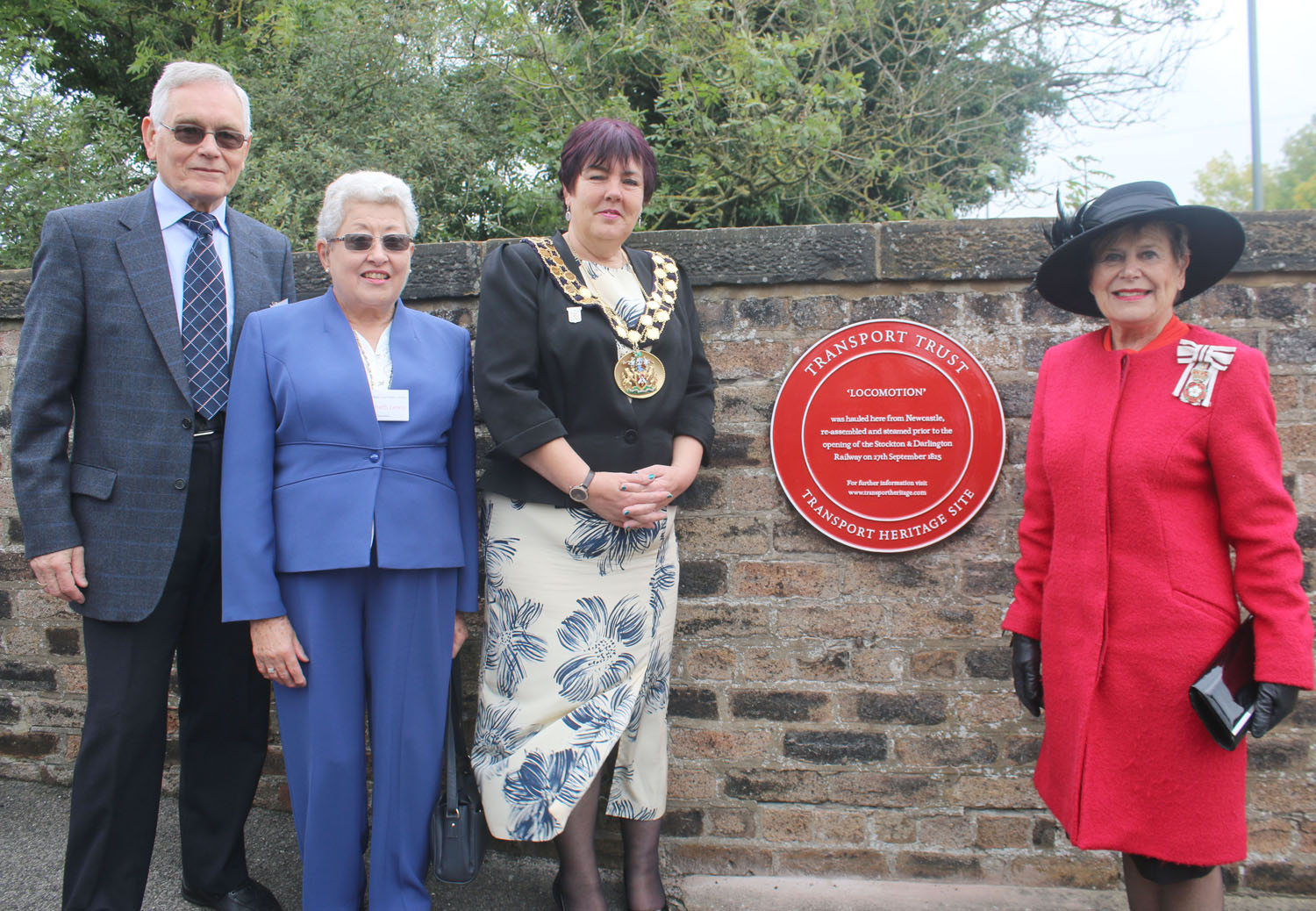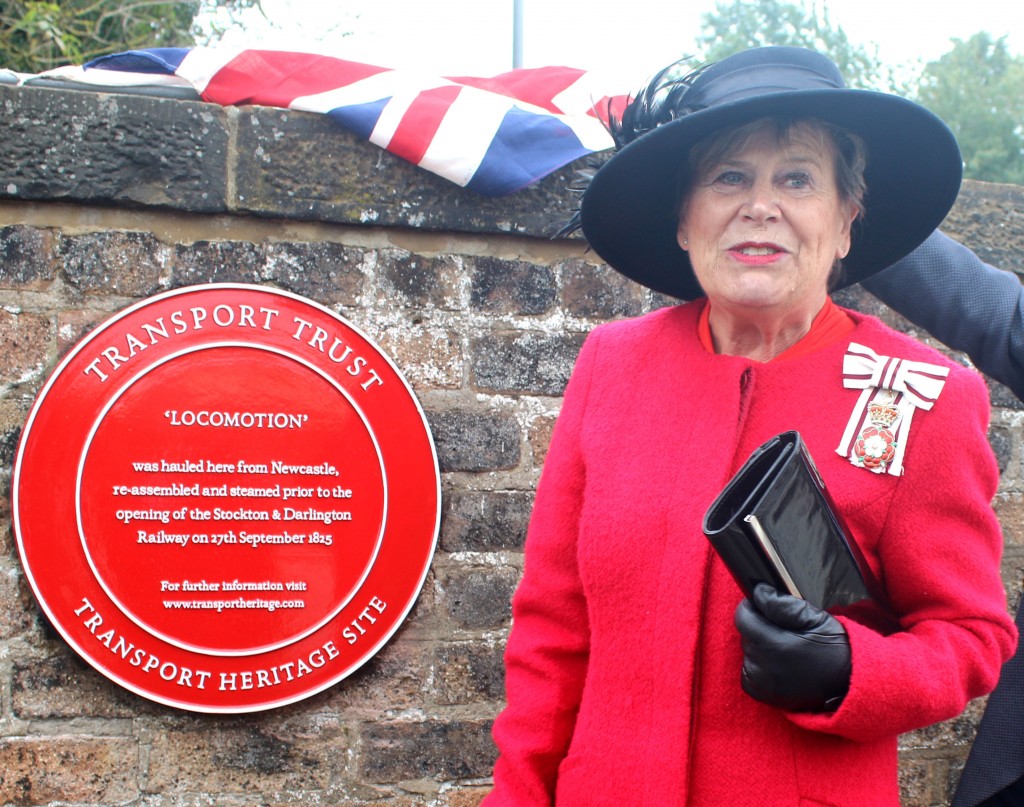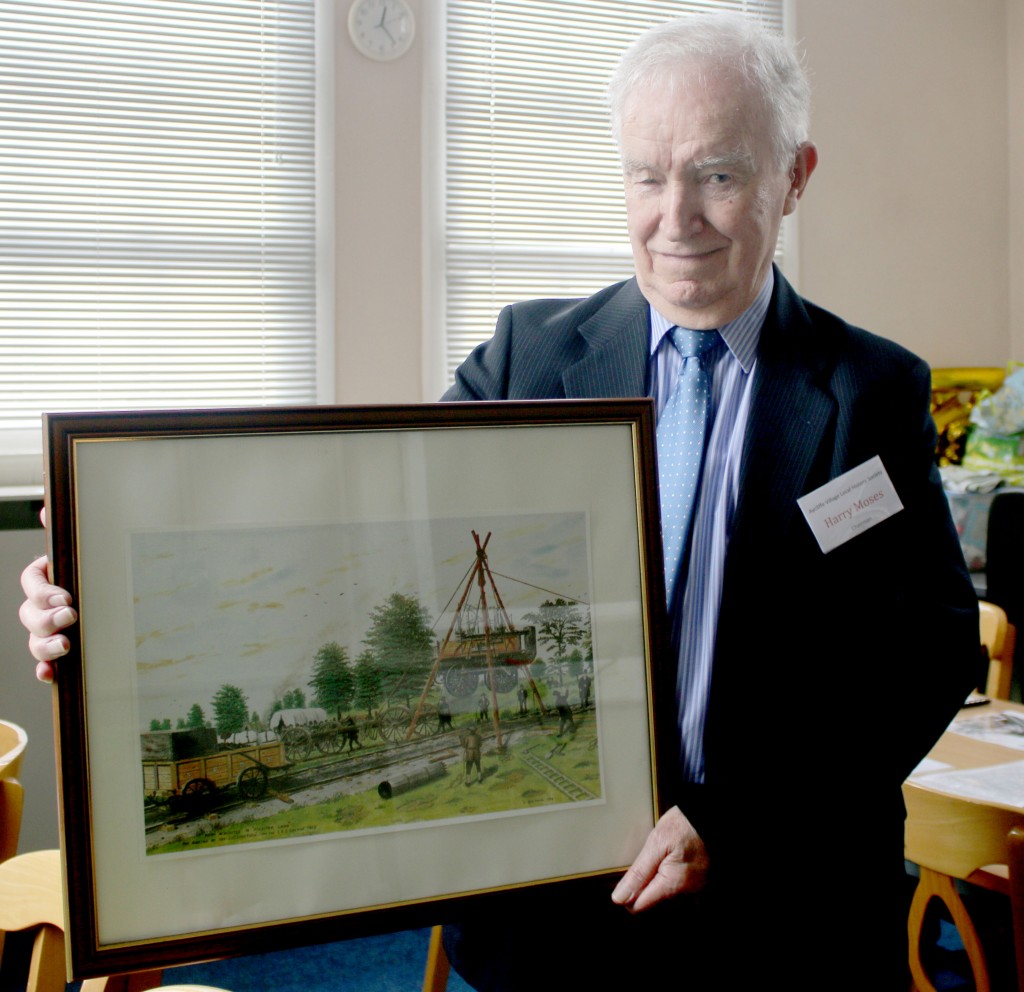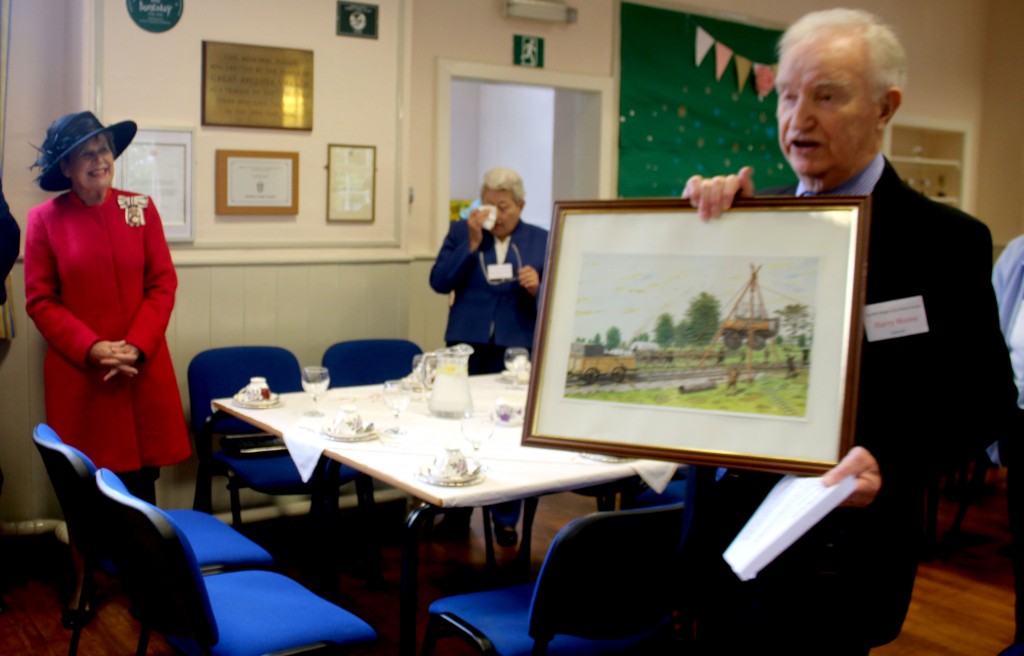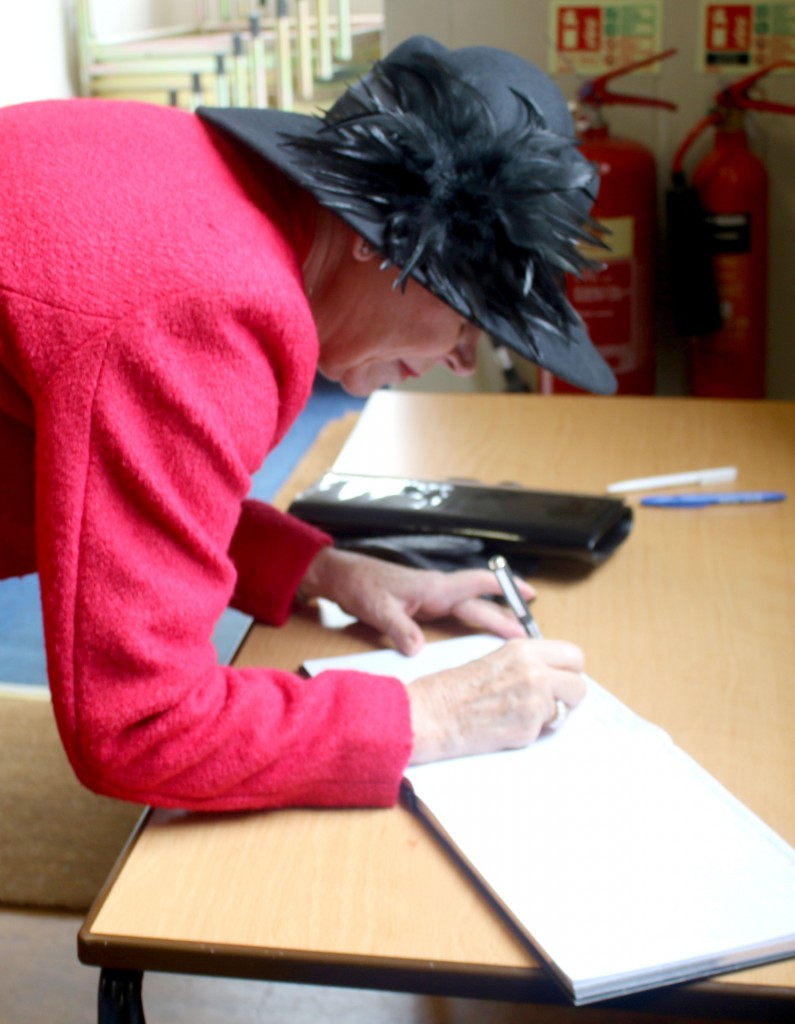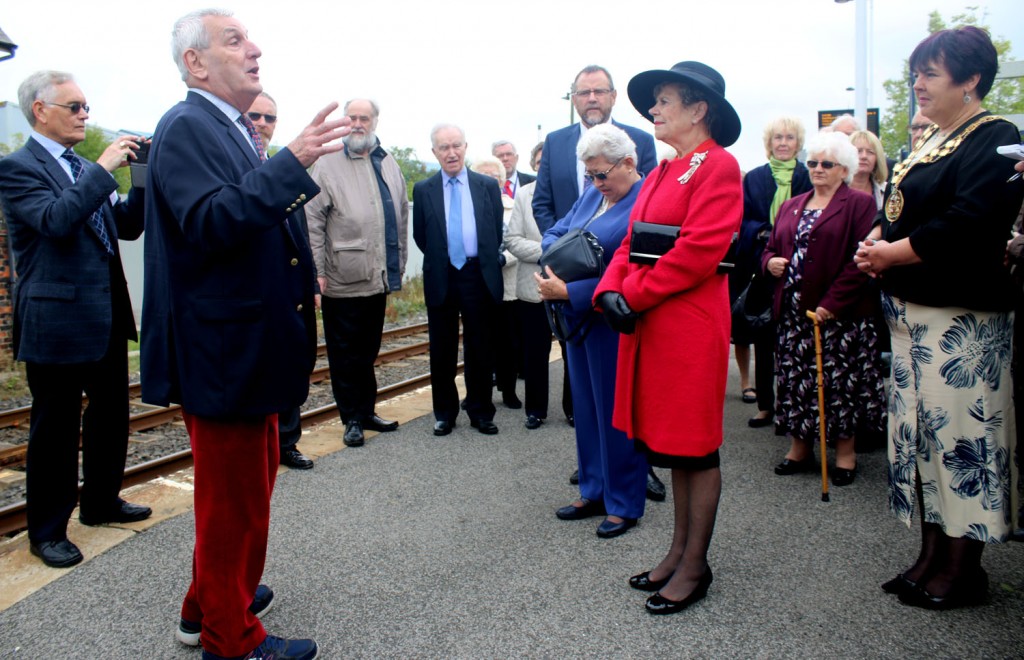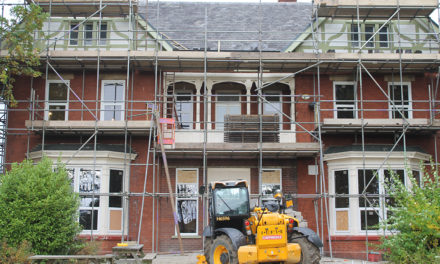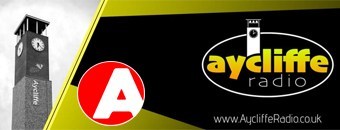Just over two years ago Harry Moses, Aycliffe Village History Society Chairman thought there should be a board up at Heighington Station to recognise this was where Locomotion was put on the track in 1825.
Shortly after his suggestion members Elizabeth and David Lewis were visiting Standedge Tunnel and visitor centre at the canal basin in West Yorkshire when we spotted for the first time a Red Wheel Plaque put up by the Transport Trust.
We thought this was what was needed for the station. Elizabeth contacted the Transport Trust and so began two years of correspondence with them, the various railway authorities, the owner of the Locomotion Pub and the unveiling event was the culmination of two years hard work. The plaque was provided free by the Transport Trust and Network Rail arranged for it to be fixed to the wall. Without the efforts of Aycliffe Village Local History Society there would be no recognition of Aycliffe’s part in the birth if the railway. All we need to do now is have the station name changed to its original 1825 name of “Aycliffe Lane” as Heighington has no connection at all to the station!
The LOCOMOTION, under the Works name Travelling Engine No 3, was completed at Robert Stephenson & Co’s Forth Street Works, Newcastle, for the Stockton & Darlington Railway in early September 1825.
George Stephenson wrote the following to Joseph Pease and dated his letter 12th September 1825, but subsequent evidence shows he was rather behind with his correspondence:
“I beg to inform you that the Improved Travelling Engine was tried here [Forth Street] last night [probably Thursday 8th September] and fully answered my expectations. And if you will be kind enough to desire Pickersgill to send horses to take it away here on Friday it shall be loaded on Thursday evening. I calculate the weight of the engine between 5 and 6 tons”.
Three horse-drawn wagons took the Loco and Tender by road to Aycliffe Road (Heighington Station) on Friday 9th September and it was set on the railway there on Saturday 10th September 1825.
Various parts were removed for the road journey, and the tender, and the locomotive was ‘assembled’ and steamed again.
The name LOCOMOTION was adopted a little later, then LOCOMOTION No 1, because it was the first working locomotive on the S&DR. Legend suggests that the loco was initially and informally called ACTIVE because George Stephenson describes it as ‘active.’
The man who lit the fire for the steaming at Aycliffe Road was Robert Metcalfe, a navvy from Church Street, Darlington, and he wrote down his experiences:
“[LOCOMOTION] come to highton [Heighington] Lane by road, we had to get her on the way [on the rail tracks, the permanent way, of S&DR]. When we got her on the way we pump water into her. We sent John Taylor for a lantern and candle to acliffe (Aycliffe). When we done that I thought I would ave me pipe. It was a very warm day though it been back end of year. I took me pipe glass and lit me pipe. I thought to myself I would try to put fire to jimmy ockum [oakum: shredded hemp rope used as packing for joints and, on ships, between deck planks and hull timbers; ‘jimmy’ a 19th century slang adjective (and noun) attached to words but not adding any meaning] it blaze away well the fire going rapidly. Lantern and candle were no use [i.e. not needed] so fire was put to her on line by the pour [power] of the sun”.
There may have been other tests and on 16th September the S&DR announced the official opening of the Railway for Tuesday 27th September. There was a trial run with the locomotive on the evening of Monday 26th September 1825.
I think, therefore, we can support the Red Wheel but the wording of the dates may not be correct so it was suggested:
HEIGHINGTON STATION (Formerly Aycliffe Lane)
LOCOMOTION No. 1, built in Newcastle, was delivered by 3 horse-drawn wagons, put on the rails and steamed here. Official Opening Day of the Stockton & Darlington Railway was 27th September 1825. 192 years ago World Railway Travel began.
According to Wikipedia it was originally Aycliffe Lane in 1825, changed in the 1850’s to Aycliffe & Heighington, then back to Aycliffe July 1871 and finally to Heighington in 1874. The name change to Heighington was to avoid confusion when Aycliffe Village had a station on the east coast main line but that closed in 1953. It would be good to have the original Aycliffe Lane Station back in use to restore its origins.

